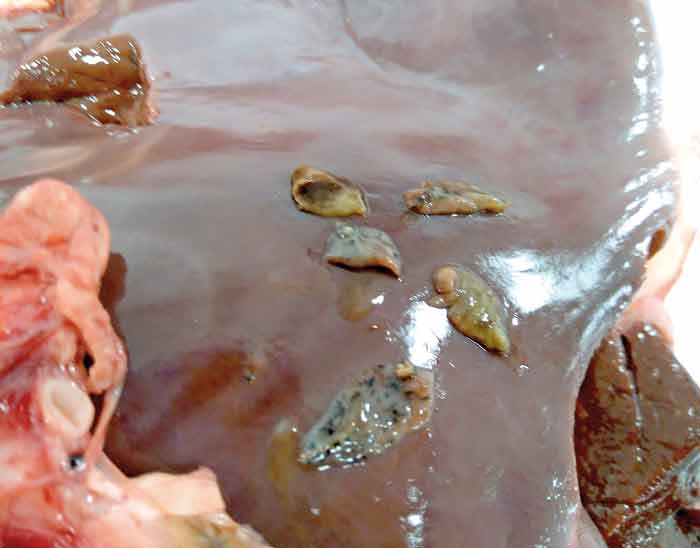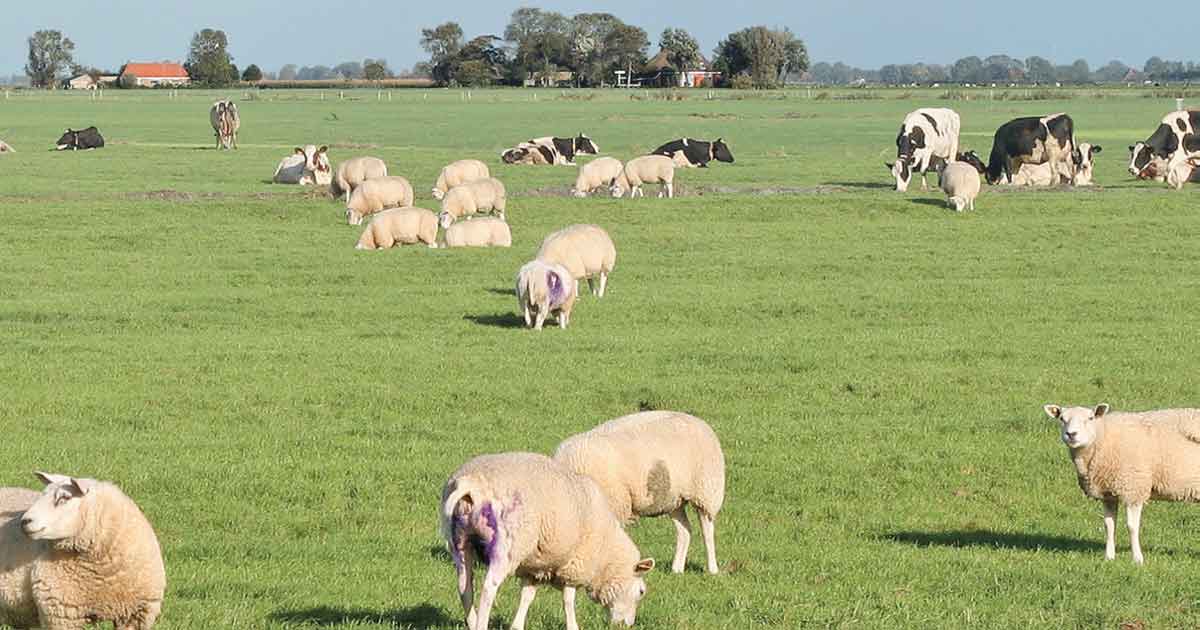Livestock breeders are under increasing pressure to meet the growing demand for more meat and dairy products by breeding more productive animals and increasing animal production. Achieving a proper balance between improving livestock production, and maintaining the health and welfare of animals, requires – among other things – controlling parasitic diseases and implementing efficient methods to reduce the threat of growing levels of resistance to anthelmintic drugs.
The private sector and the veterinary profession have made some efforts to improve animal production and help solve the anthelmintic resistance problem; however, much work remains. This article highlights the key role veterinarians can play in maintaining efficient livestock
production by preventing parasitic diseases while employing effective ways to minimise the adverse consequences of anthelmintic resistance.
Helminths, or worms, comprise a large group of parasitic species that infect farm animals throughout the world. These include the nematode (roundworm), cestode (tapeworm) and trematode (fluke).
Species belonging to these parasite groups occupy distinct niches within their animal hosts, ranging from gastrointestinal (gut) lumen to lung and liver. Despite the widespread use of anthelmintics and increased awareness of anthelmintic resistance (AR), the financial burden caused by helminth infection in livestock is significant.
Helminth infections can severely compromise the efficient production of safe and affordable dairy and meat products. These parasites are very clever, and employ various molecular mechanisms to remarkably manipulate the immune defences and persist in their hosts (Maizels et al, 2018). Also, the occurrence of AR is increasing and represents a serious threat, not only to infected animals that do not respond to anthelmintic drugs, but also to food security. Adding to this challenge is the expected increase in the global food demand of 60% to 100% by 2050, when the human population is projected to reach 9.7 billion.
Unless a comprehensive sustainable action is taken, helminth infection and AR will continue to cause an increasing adverse impact on the global agricultural economy. The veterinary profession has a significant role in raising awareness and acting to reduce or prevent this harm. This review aims to encourage farm animal vets to consider responsible use of anthelmintics in parasite management programmes, and recognise efficient management of worm infection requires a
holistic approach combining both anthelmintics and appropriate complementary methods.
Impact of helminth infection
Infections caused by parasitic worms in ruminants can cause serious economic impacts, due to impaired animal health and fertility as well as reduced productivity. Gut nematodes, such as Ostertagia ostertagi and Cooperia oncophora, are considered the most important nematode parasites affecting cattle in the UK and other temperate regions. Traditionally, the timing of most control programmes of parasitic gastroenteritis has been revolved around controlling these nematodes.
Ruminants can also be infected with other worm types, such as lungworms and liver flukes (Figure 1), which can seriously impact the health and productivity of affected animals (Morgan et al, 2013). Immunologically naive calves, particularly in their first grazing season, are more vulnerable to high parasite loads and succumb to clinical disease, which leads to significant reduction in weight gain (Mason and McKay, 2006).

Anthelmintics are valuable therapeutics
Helminth infections – particularly in sheep farms – are mainly managed with anthelmintics, commonly known as wormers or dewormers. Several anthelmintics are effective against such infections (Elsheikha and Khan, 2011). The broad-spectrum anthelmintic groups range from benzimidazoles, levamisole, imidazothiazoles and tetrahydropyrimidines, and macrocyclic lactones (including avermectins and milbemycins), to the most recent classes aminoacetonitrile derivatives (monepantel) and spiroindoles (derquantel).
These broad-spectrum anthelmintics are effective against the major species of gut roundworms and lungworms, with some also having activity against liver fluke. They are more commonly used in ruminants because they are relatively safe, easy to administer and can eliminate large numbers of parasites. Macrocyclic lactones are often referred to as endectocides because they have activity against endoparasites and some ectoparasites.
Other products – known as narrow-spectrum drugs, such as salicylanilides and organophosphates – have less use because they are more restricted in the range of parasites they kill, and act on adult worms and partially on juveniles stage of Fasciola hepatica.
Given the broad variety of anthelmintics, veterinarians should be selective, choose the most relevant drug, and consider the active ingredients that target the parasite species and parasite stages (adult or juvenile) that are most likely causing the infection. Confirmation of infection should be based on the use of appropriate diagnostic methods, such as faecal worm egg count (Figure 2).
Using anthelmintics to manage worm infections
How does AR develop?
The use of anthelmintic drugs in livestock production provides clear benefits, such as improved animal health, improved fertility and higher productivity. However, the use of anthelmintics for parasite control purposes, particularly in sheep farms, has come under much scrutiny as it has been shown to contribute to the increased development of anthelmintic-resistant worms, thereby posing obvious threats to sustainable farming.
AR is defined as a reduction in the efficacy of an anthelmintic drug against a helminth species that was previously susceptible to the same anthelmintic at the recommended dose rate. Resistance to anthelmintic treatment in worms can result from various molecular mechanisms, such as genetic changes in the gene encoding the drug target (for example, benzimidazole resistance in nematodes) or increased active transport of the drug through ATP-binding cassette transporters (for example, P-glycoprotein), which can transport ivermectin and other anthelmintics, leading to multi-drug resistance (James et al, 2007).
Drivers of AR include under-dosing, frequent treatments – especially when deworming the entire herd with the same active ingredient – and low refugia (Elsheikha and Khan, 2011; Sutherland and Leathwick, 2011). Resistant worms transmit their heritable traits to the next generation, which increases the frequency of their resistant genetic alleles in the general worm population. The genetic basis and modes of inheritance of resistance vary widely among the various classes of drugs. Resistance to anthelmintics in gut nematodes of sheep is more prevalent than in cattle, but reports of AR in cattle gut nematodes is increasingly reported.
Industry response to the challenge of AR
Any increase in the prevalence of AR would render parasite control programmes unsustainable in the long term (McKellar and Jackson, 2004). Therefore, effective measures should be considered to tackle this growing threat, with integrated management schemes and less reliance on the sole use of anthelmintics. The livestock industry has been proactive in engaging farm animal health providers through education and discussion about barriers to responsible use of anthelmintics from a clinician’s perspective.
To address the problem of indiscriminate use of anthelmintics that do not follow a reasonable logic, sheep and cattle industries developed Sustainable Control of Parasites in Sheep and Control of Worms Sustainably guidelines, respectively. These guidelines can help improve animal productivity and enable more efficient
parasite control without encouraging AR.
Control of helminth infection that is becoming increasingly resistant to anthelmintics
Conclusion
Meeting the increasing consumer demand for protein is one of the major challenges humankind must deal with for the next few decades. Increasing livestock production through efficient prevention of parasitic diseases is crucial to achieving this goal. Maintaining the effectiveness of existing anthelmintic drugs is, therefore, essential for ensuring efficient worm control.
Parasite management should be supported by frequent monitoring of worm burden and include practices that delay the development of AR. Veterinarians, clinical parasitologists and suitably qualified persons can play key roles in all parts of strategies to counter AR. Vets need support and education to ensure they
adhere to the proper use (correct and sensible prescribing) of anthelmintics, are able to make informed decisions, and rely on an integrated approach that combines both anthelmintic treatment and good grazing management.
Conflict of interest
The author declares no commercial or financial relationships that could be construed as a potential conflict of interest. References to drugs do not imply their endorsement by the author or publisher.

Leave a Reply